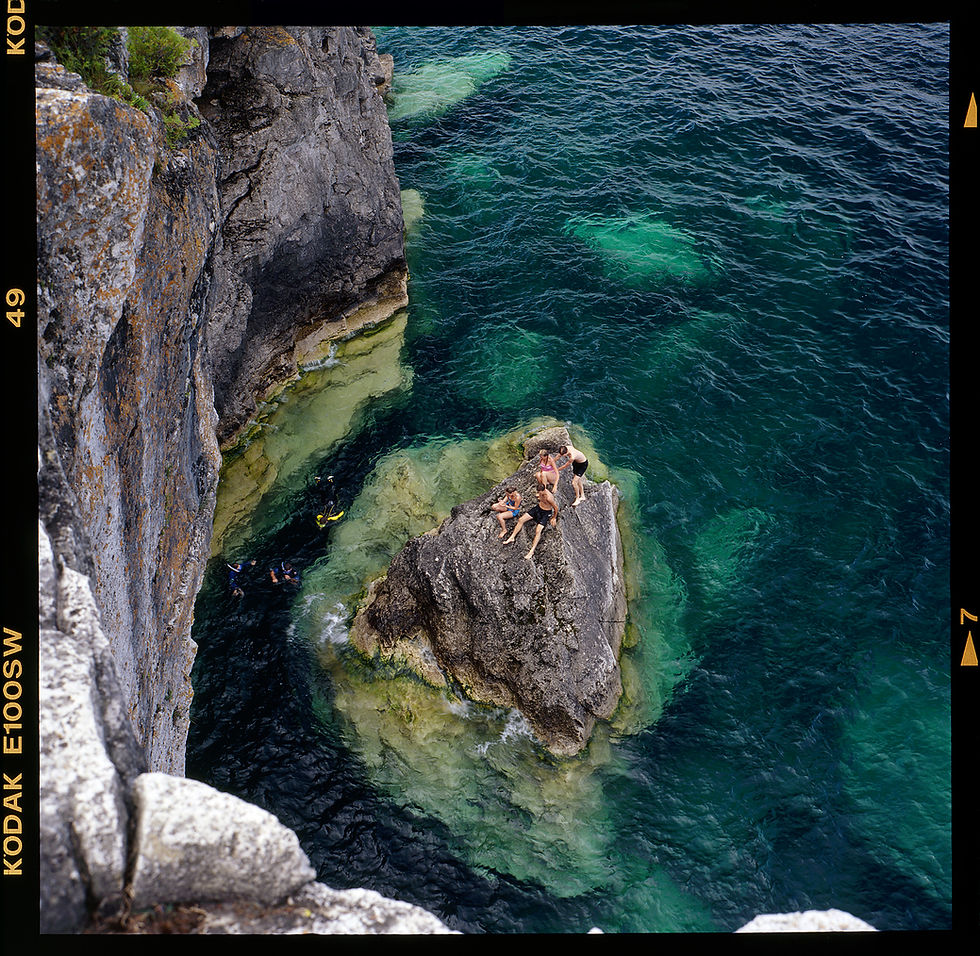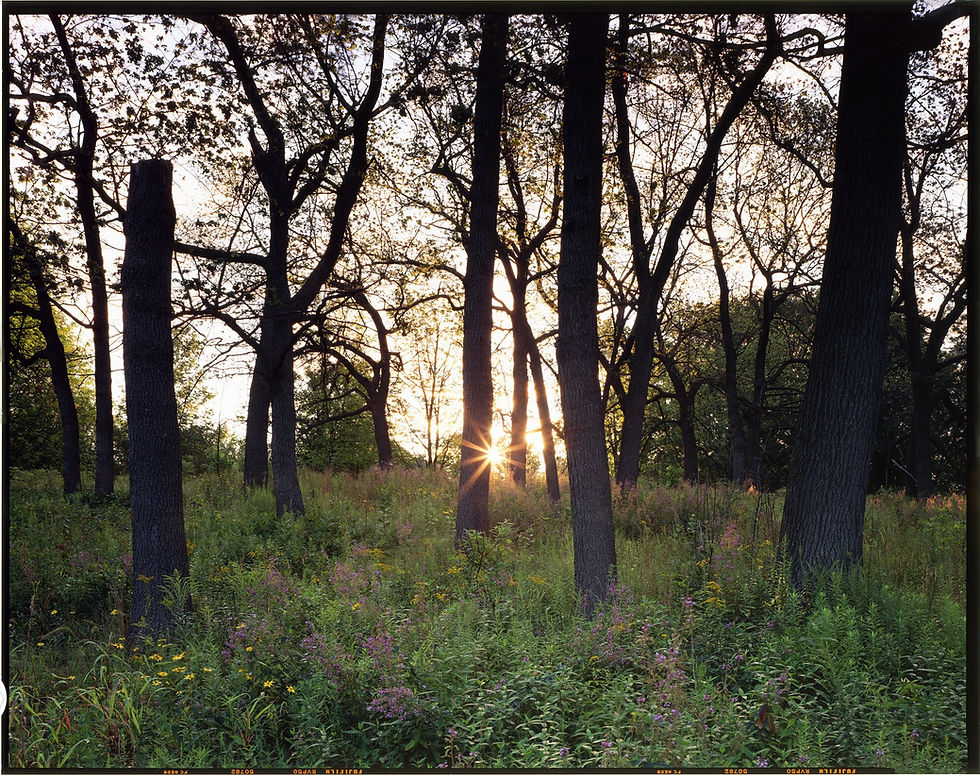Kodak E100 is back in 120 & 4x5!
- David Nardi

- Jan 6, 2020
- 5 min read

Before I ramble on let's have a read from Kodak's press release:
These new format offerings follow on the highly successful launch of EKTACHROME E100 in 135- 36x size last year. “Our new E100 film is a big hit with photographers of all ages” said Dennis Olbrich, President – Kodak Alaris Imaging Paper, Photo Chemicals and Film. “The market response has been tremendous. Adding 120 and sheet films takes us to the next level.”
Sales of professional photographic films have been steadily rising over the last few years, with professionals and enthusiasts alike rediscovering the artistic control offered by manual processes and the creative satisfaction of a physical product.
KODAK PROFESSIONAL EKTACHROME Film E100 is a daylight balanced color positive film, featuring clean, vibrant colors, a neutral tone scale, and extremely fine grain. Its distinctive look is well suited to a wide range of applications, such as product, landscape, nature and fashion photography.
It's the year 2020 and a good reminder that anything is possible as we move into a new decade. Kodak dusted off their E6 lab notes and re-introduced E100 transparency film to great success last year in 135 while bringing a process back from the dead. In the final weeks of 2019, E100 has been officially released in 120 and 4x5 formats. Why? Because someone, somewhere in the company, had a vision. Or maybe it was 500,000 nagging millennials tugging on their corporate collars with a desire to experience the glory days of film, because they never got that chance growing up digital. It’s been great to see all of us band together to keep film alive thanks to the collective power of the internet. I can’t tell you how many 20 and 30 somethings I run into that just can’t get enough of the stuff. It’s incredibly inspiring.
So this is big news for E6 film. About 7 years ago Kodak pulled the plug on all their transparency films. They shut down the entire manufacturing line and stuck to colour and B&W negatives. In fact, among the countless discontinuations of various films from all manufacturers over the last decade, the "Big Three" focused on their relative strengths, seemingly working together to keep the last vestiges of film products viable for those still willing to use it: Kodak dominated with great colour negatives; Ilford with B&W; and Fujifilm with transparencies. Honestly it did get quite scary there for a while, especially for E6 users like myself. When Fuji discontinued Velvia 50 due to a lack of sourcing certain chemicals and regulation changes, the pre-millennials cried out with petitions and company phone calls. A few years later Fujifilm reformulated this wonderful film and released it once again (sidebar: Fuji please bring back 4x5 and 8x10 sheets to North American shores, can’t you see how many people like myself want to use it? Just check those Instagram accounts!)

Why use film at all? I think the allure is mainly a physical one. You can touch it, smell it, taste it (just ask my cat, she loves licking the emulsion), unlike those sterile touchscreens sitting in our pockets. There’s a limited number of frames on a roll. It forces you to take your time and experience a moment before committing it to this miraculous light-sensitive-acquisition material. No matter how you slice it, digital just cannot come close to this experience. You can’t knock them for trying. Some cameras purposely hide or don’t even have a rear LCD to make you “feel” like you are shooting film. The effect is to slow you down, make you rely on your technical know-how and creative eye, to capture that successful shot, much like film. But where digital falls flat is in the viewing experience afterwards. They’re generally stuck inside your computer and rarely see a final print. I think with film and the extra effort that goes into it, photographers are more inclined to see that one good shot through to print. And even if that fails, E6 film gives you a positive image that requires no power to view. Just find your nearest window or floor lamp and hold it up to the light. But the best way is to use a daylight balanced light table to see the colours in proper form.

The simple act of waiting to have your film processed builds excitement and anticipation. Once developed I find I’m always blown away to see vibrant, colourful transparencies glowing back at me on the light table. The bigger the format the better it gets. Of course some frames will be too dark, or light, or out of focus, or technically flawed in some other way, but those are quickly earmarked and set aside for the remaining good ones. Trust me, you learn from your mistakes quickly. Then the fun begins when you loupe over that “good” frame in question and discover it turned out exactly the way you had intended. From there the hook is in and the process has captured your soul. And you want to go out and do it all over again.

When digital came on the scene nearly 20 years ago, I had never expected it to almost eradicate film as quickly as it did. Film had over 150 years of innovation, knowledge and experience behind it. But that wasn’t enough to stop the new kid from steamrolling over it. I remember when I used to do gallery art shows and someone came up to me and said I’ll go digital in a year. I found in these social interactions that most people were chasing “easy” and “effortless”. They had an almost “give up” or “give in” mentality. It was truly depressing. But film still had a foothold and came back with more fervour than I ever imagined. Sure the industry today isn’t what it was, and it never will be, but what is left is more than I can ask for. Despite some great products being lost to the sands of time, there is a little something for everyone, and we can all benefit ourselves and the manufacturers for using their products to keep this wonderful medium thriving. It is also nice to see new companies coming out to support the film industry in this new age. Every day I see new photographers reaching for a film camera and film. The desire to experience something new, daring to be different, love of the look, the process, the unique cameras, whatever it is, is inspiring and it encourages me to keep going.

Kodak effectively went full circle with their portfolio offering film in all types: colour negative, B&W, and my favourite, E6 transparency. As much as I love Fuji’s E6 products it does all of us some good to have healthy competition. And Kodak’s E100 is another welcome product to paint the world with. It’ll definitely find a spot in my camera bag. If you have never shot E6 before, go get yourself a roll and have a taste. Something in those glowing, translucent, colourful frames is addictive. And since E6 film is much more finicky to shoot than its “negative” counterparts, it should make you a better photographer as well. You just need to put in the effort and work through those failures which are frustratingly inevitable. E6 film is unforgiving and honest, giving direct feedback of your performance. Don’t take it personally!
Stay "positive" and the results will come.

No doubt, if you've come this far, you've seen some of my early work peppered throughout this post. This was back when Kodak offered a few flavoured emulsions; E100S, E100SW and E100VS, “Saturated”, “Saturated Warm” and “Vivid Saturation” respectively. We may not have the bountiful selection we once had in E6 choices from the various manufacturers, but I'm certainly glad that Kodak is listening!
I believe the new E100 is based on the E100S profile.



Comments